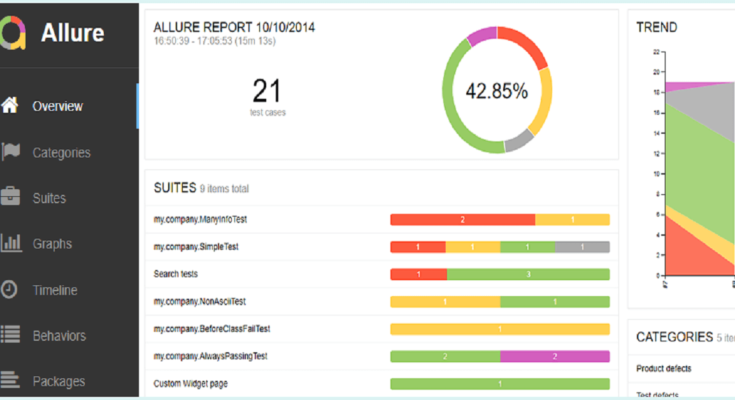Introduction
Are you tired of sifting through endless reports that don’t clearly and concisely cover your project’s requirements? Look no further than the Allure Framework. This powerful tool simplifies reporting, making it easier to understand and track your progress. Let’s delve into how to use Allure for clear and concise requirement coverage reporting!
The Allure Framework
The Allure Framework is an open-source reporting tool that provides clear and concise requirement coverage for software testing. It generates interactive reports with detailed information about test execution results, including screenshots and videos of failed tests.
What makes Allure a popular choice among testers and developers is its user-friendly interface, which allows them to quickly identify issues and track progress in real-time. The framework supports multiple programming languages such as Java, Python, Ruby, C#, etc., making it accessible to a wide range of users.
One of the main advantages of using Allure is its ability to integrate seamlessly with various testing frameworks like JUnit or TestNG. This feature enables users to generate reports automatically without having to write any code manually.
Moreover, the customizable report templates provided by Allure allow users to tailor their reports according to their specific needs. They can add or remove different types of widgets such as pie charts, bar graphs, tables and many others depending on what they want to highlight in their report.
The Allure Framework has become an essential tool for software testers who seek clear and concise requirement coverage reporting. Its seamless integration with various testing frameworks along with its user-friendly interface make it a top choice among developers worldwide.
How to Use Allure
Using the Allure Framework is a simple and straightforward process. First, you need to install Allure on your system using either Maven or Chocolatey commands. Once it’s installed, you can start using it in your project by adding the appropriate dependencies. To generate a requirement coverage report, you need to first create a project in Allure. To do this, open Allure and click on the New Project button. You will be prompted to provide a name for your project and select a language
To generate reports with Allure, you need to run your tests and then execute the command “allure serve” in the terminal/command prompt. This will open up a browser window displaying your test results in an easy-to-read format. If you want to customize your reports, you can use the “allure report” command to generate different types of reports. For example, you can generate a report containing all the failed tests, a report containing all the passed tests, or
In addition to generating basic test reports, there are several other features of Allure that can be used to enhance testing coverage reporting. These include attaching screenshots and videos of failed tests directly into the report, as well as customizing report templates for specific needs. Overall, the Allure Framework is an essential tool for software testers who want to generate clear and concise requirement coverage reports. Its seamless integration with various testing frameworks, user-friendly interface and customizable reports make it a top choice among developers worldwide.
Using Allure is a great way to provide clear and concise requirement coverage reporting for any testing project. With its user-friendly interface and customizable options, it’s no wonder why more developers are turning towards this framework.
Advantages of Allure
There are many advantages to using the Allure Framework for requirement coverage reporting. One of the biggest benefits is that it provides clear and concise test reports, making them much easier to understand and work with.
Another advantage is that Allure allows you to see exactly which tests have passed and failed, as well as any issues or errors that were encountered during testing. This can be incredibly helpful when troubleshooting problems or trying to identify areas for improvement in your testing process. Last but not least, Allure is a popular choice among testers and developers because of its seamless integration with various testing frameworks. This means that you can easily generate reports using your preferred testing tool, whether it’s JUnit or TestNG.
In addition, Allure offers a range of features and integrations that make it easy to customize your reporting experience. For example, you can use plugins to add additional functionality or integrate with other tools like JIRA or Jenkins.
Perhaps one of the biggest advantages of Allure is its community support. With a large user base around the world, there are plenty of resources available if you ever need help getting started or running into issues along the way.
If you’re looking for a powerful yet easy-to-use framework for requirement coverage reporting, then Allure might just be what you need.
Conclusion
To sum it up, the Allure Framework is an excellent tool for generating clear and concise requirement coverage reports. Its user-friendly interface makes it easy to use even for beginners. With its customizable features, you can tailor your report templates according to your specific needs.
By using this framework, you can easily track the progress of your project and ensure that all requirements are met. The ability to generate detailed visual reports allows for easier communication with stakeholders as well.
If you want a comprehensive solution for requirement coverage reporting in your software development projects, then the Allure Framework is definitely worth considering. It helps streamline processes and improves collaboration among team members while ensuring high-quality output.




